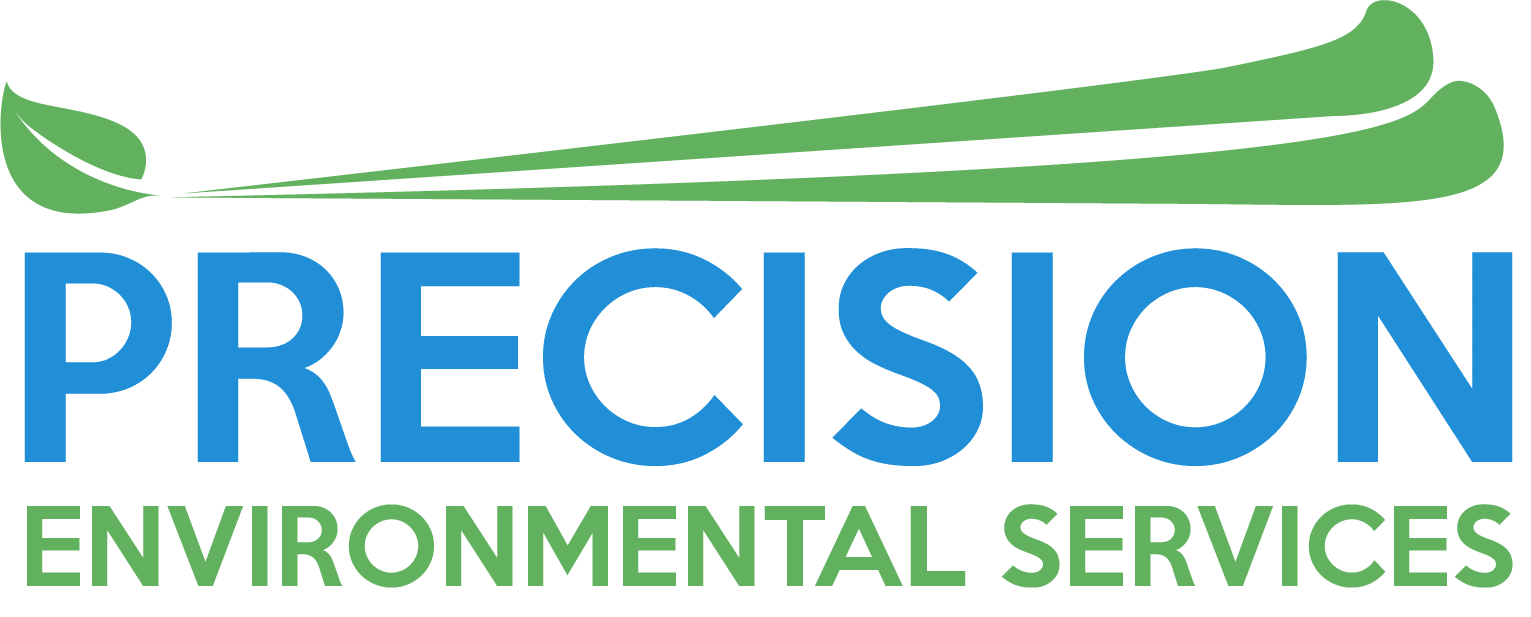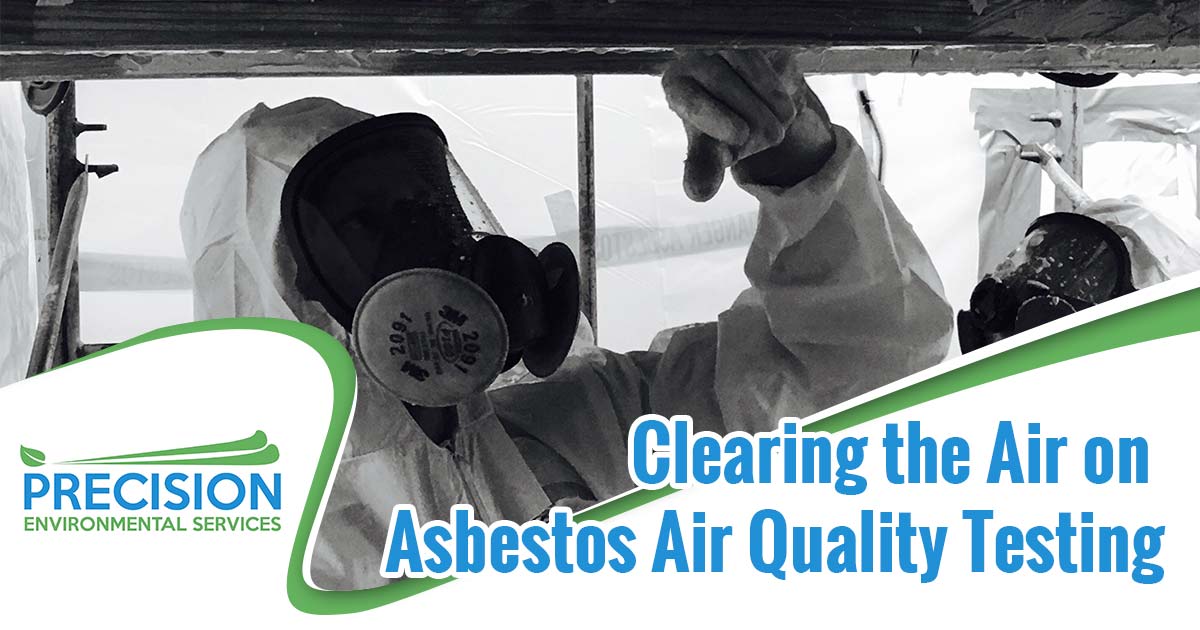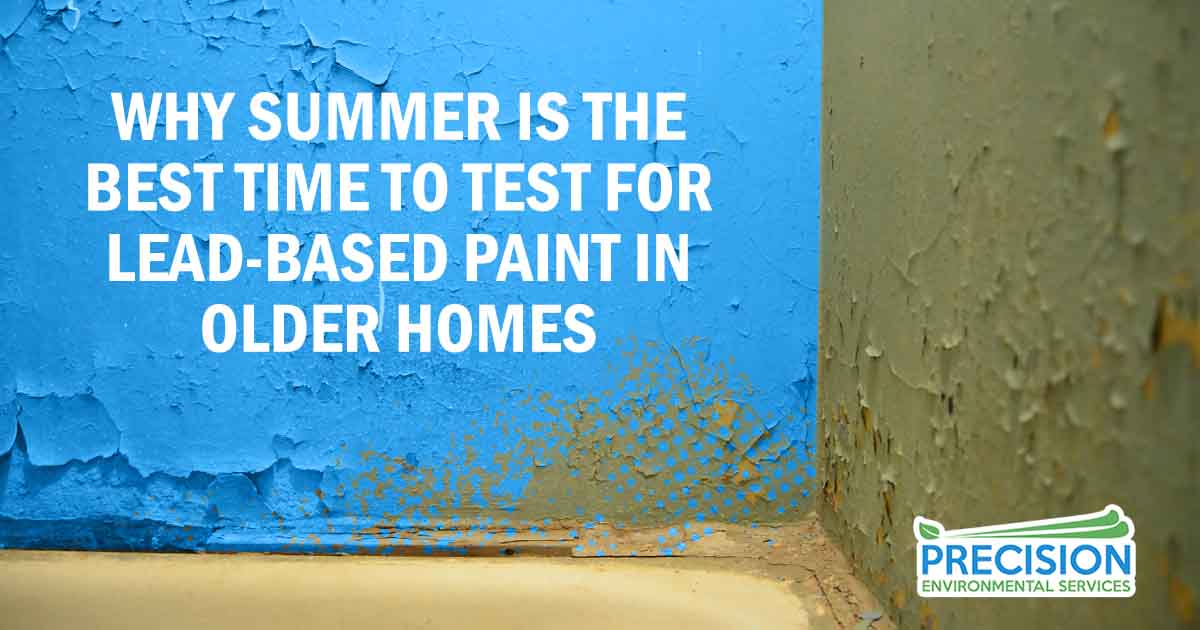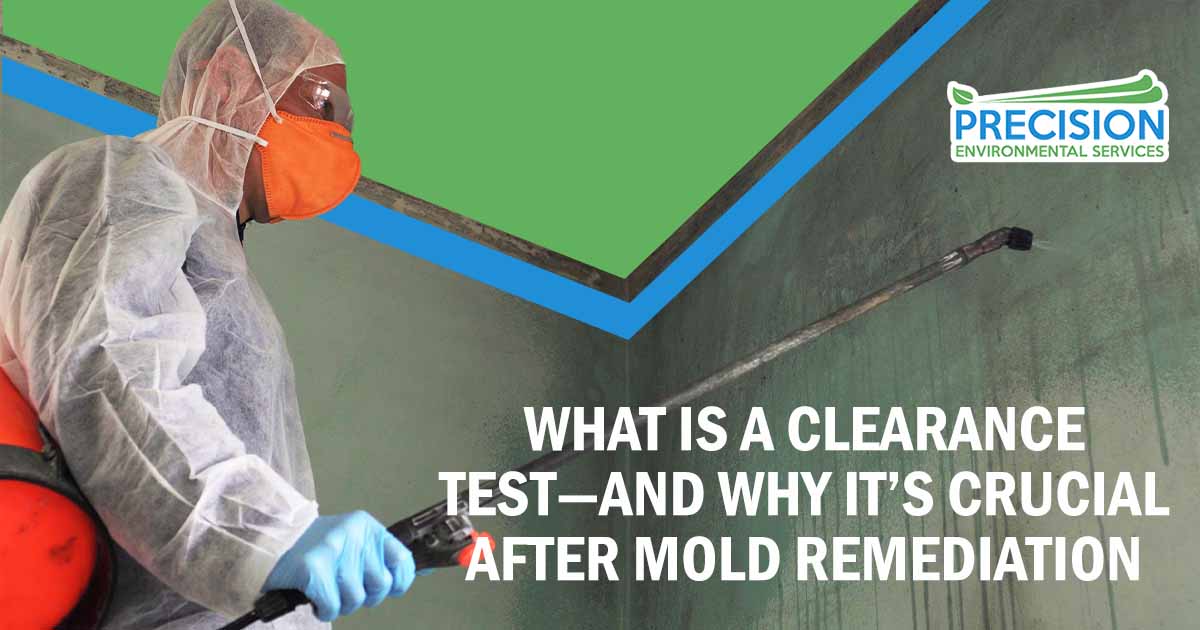Most people are aware of the dangers of asbestos exposure but do not realize it only takes a small amount to do damage. In fact, one gram of asbestos can produce billions of tiny, needle-like fibers that can have a harmful effect on human health. That is why asbestos surveys, such as those provided by the accredited inspectors at Precision Environmental Services, are so important.
What is Asbestos?
Asbestos was among popular building materials throughout the 20th Century because of its durability and flame-resistant qualities. It was used in plastics, cements, paper, adhesives, and even in some clothing items. It was not until later that asbestos was linked to some serious health-related conditions, including Mesothelioma. Asbestos is commonly found in the following building materials:
- Attic and wall insulation produced containing vermiculite
- Ceiling tiles
- Floor tiles (and the backing on vinyl sheet flooring and adhesives)
- Roofing and siding shingles
- Textured paint and patching compounds used on walls and ceilings
- Walls and floors around wood-burning stoves protected with asbestos paper, millboard, or cement sheets
- Hot water and steam pipes coated with asbestos material or covered with an asbestos blanket or tape
- Oil and coal furnaces and door gaskets with asbestos insulation
During the 1980s, many asbestos regulations were put in place to guide professionals on how to manage asbestos-containing materials. While many people believe that asbestos is banned in the United States, that is not the case. Asbestos-containing products can still be found in local hardware and building supply stores across the U.S. If asbestos is discovered in a home or commercial property, remediation, or asbestos removal will need to take place.
What is Asbestos Abatement and Remediation?
Common solutions for getting rid of asbestos are abatement and remediation. Sometimes used to describe the same process, abatement can be a part of remediation but there are some differences.
Abatement: During abatement, the asbestos-containing material is either completely removed or encapsulated so it no longer poses a threat to human health.
Remediation: Taking it a step further, remediation addresses the underlying issue of asbestos contamination so you can prevent it from happening in the future.
The detection and removal of asbestos is best performed by a licensed professional, but a home or property owner needs to be sure the company they hire can handle the job. An asbestos removal project falls into three categories:
- Class 1 Work: This type of asbestos removal work is potentially one of the most hazardous as it deals with materials that prevent the loss or gain of heat. That includes thermal insulation, pipes, ducts, tanks, and any sprayed-on or troweled-on surface.
- Class 2 Work: Asbestos removal in the second class of related work includes non-thermal asbestos materials that potentially contain asbestos, including flooring and roofing materials, as well as ceiling tiles, siding, and shingles.
- Class 3 Work: This type of work involves cleaning up asbestos-containing waste and debris, typically caused by construction or repair activities. That includes dusting, vacuuming, and moping the area where any asbestos fibers could accumulate.
Asbestos becomes a threat when it is disturbed and then becomes airborne. At this stage, the fibers in the air are easily inhaled which causes problems in the lungs. In most cases, you cannot tell if a material contains asbestos simply by looking at it. If you think it may be a possibility, treat the material as if it does contain asbestos and do not bother it. Instead, you should leave it to the professionals, like the accredited inspectors at Precision Environmental Services.
Can an Air Quality Test Detect Asbestos?
After the abatement or remediation is performed, another asbestos survey, an air test, should be performed before anyone can enter the area without proper protective gear. An asbestos air clearance test ensures that the remediation or abatement of the asbestos is complete, the area has been properly cleaned, and if the air is at an acceptable level for people to breathe.
The Environmental Protection Agency EPA, and the Occupational Safety & Health Administration have set a method of air quality testing for asbestos and requires a trained professional to properly detect the level of asbestos in the air. There are two different tests when air testing for asbestos:
- Phase Contrast Microscopy PCM
- Transmission Electron Microscopy TEM
Phase Contrast Microscopy involves taking an air sample through a filter and then testing for asbestos fibers. With a PCM test, a homeowner or property owner can expect:
- An air sample from the contaminated area is collected in a sampling container through a filter.
- The collected particles are then examined under a polarized light microscope so that an inspector can differentiate any asbestos from other fibers that may be present in the air sample.
- If asbestos is identified, the concentration of it is then calculated by counting the number of asbestos particles caught in the filter, compared to the fixed sample size collected in the first step.
- Concentration levels are then compared to those standards of the EPA and OSHA.
If a TEM is performed, the air samples are collected and sent to a lab to be tested. There, electrons are added to the sample under a giant microscope that allows the inspector to distinguish between asbestos and nonasbestos fibers. Typically, TEM takes longer and is more costly, but, in most cases, is the more accurate test.
In either process, the asbestos air samples must be tested by a trained professional. Air samples collected for PCM must be tested by a laboratory or analyst that is accredited by the American Industrial Hygiene Association. TEM samples are tested in laboratories accredited by the U.S. National Institute of Standards and Technology, National Voluntary Laboratory Accreditation Program.
A successful remediation or abatement should return an asbestos air quality test with less than .01 fibers per cc. It is recommended that the indoor air quality testing be performed by a third party to ensure that testing is performed correctly and without bias.
Starting an Asbestos Survey and Remediation
Enlisting a professional to manage the removal of asbestos, and not attempting to do it yourself, is a smart decision that will keep you safe. Trained professionals will be able to properly test for asbestos, follow all health and safety guidelines, and keep you safe from possible exposure.
At Precision Environmental Services, all inspectors are licensed by the state and final reports meet all city and state requirements. If you need asbestos testing or abatement services, contact Precision Environmental Services at (940) 597-2673.
Frequently Asked Questions






